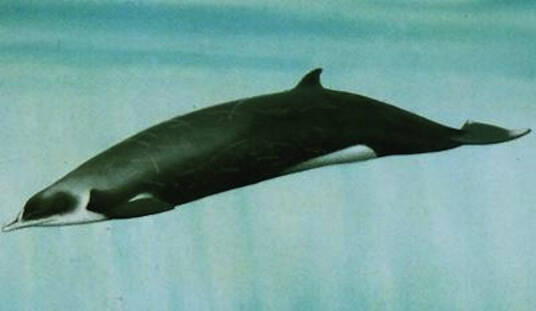Mesoplodon layardii
IUCN
LCBasic Information
Scientific classification
- name:Mesoplodon layardii
- Scientific Name:Long-toothed beaked whale, Lyman's beaked whale, hook-toothed beaked whale, long-toothed whale
- Outline:Cetacea
- Family:D.whale
Vital signs
- length:5-6.2m
- Weight:1-3 tons
- lifetime:No verification information
Feature
The teeth are bent upwards and the upper jaw is covered with dark patches on the face like a "mask"
Distribution and Habitat
The long-toothed beaked whale is the most commonly recorded species in the Southern Hemisphere: there are approximately 150 strandings and possible sightings. The northern limit of the range is about 30 degrees south latitude; the southern limit is as far as the Antarctic Circle, but the main sightings are farther north. Information is mainly from New Zealand and Australia, including Tasmania; but there are also reports from South Africa, Namibia, the Falkland Islands, Argentina, Chile, and Uruguay. Population size is unknown. Fairly common throughout the range.
Appearance
The long-toothed mesoglea whale is the largest of the beaked whales and one of the few beaked whales that can be seen in the sea. The male whale has two special teeth on its lower jaw that bend upward and backward and exceed the top of the upper jaw. The teeth of old whales can sometimes grow to 30 cm or even longer, and may meet in the middle, just above the beak, like a "mask", making it impossible to open its mouth properly; but old whales can still use their beaks to suck food like a vacuum cleaner, and the teeth may act like a "fence" to guide things directly into the throat. The teeth of female whales are not protruding, so it is almost impossible to identify them in the sea (although there may be male adult whales in many groups). The teeth of male juvenile whales are smaller than those of adult whales and are more triangular. Newborns are about 2.5-3 meters, and adults are 5-6.2 meters.
The tail fin is triangular and has no concave. The dorsal fin is loca
Details
Mesoplodon layardii, also known as Strap-toothed Whale, is the largest of the beaked whales and one of the few that can be identified in the sea. Rare in the wild; in calm, sunny weather, they may surface to bask in the sun; usually difficult to approach, especially by large ships. When they start diving, their tail fins are generally not exposed to the sea surface. Limited observations show that they will slowly sink to the surface. There is almost no water, and then they will rise from 150 to 200 meters away to spray water; or they will dive with a distinctive side-flip, first exposing a pectoral fin on the sea surface, swimming away for a distance before surfacing. The average diving time is about 10 to 15 minutes. It is believed that when they rise to the surface to breathe, they first break the water with their beaks, followed by their heads. Scars show that male whales fight with each other.

Protect wild animals and eliminate game.
Maintaining ecological balance is everyone's responsibility!








